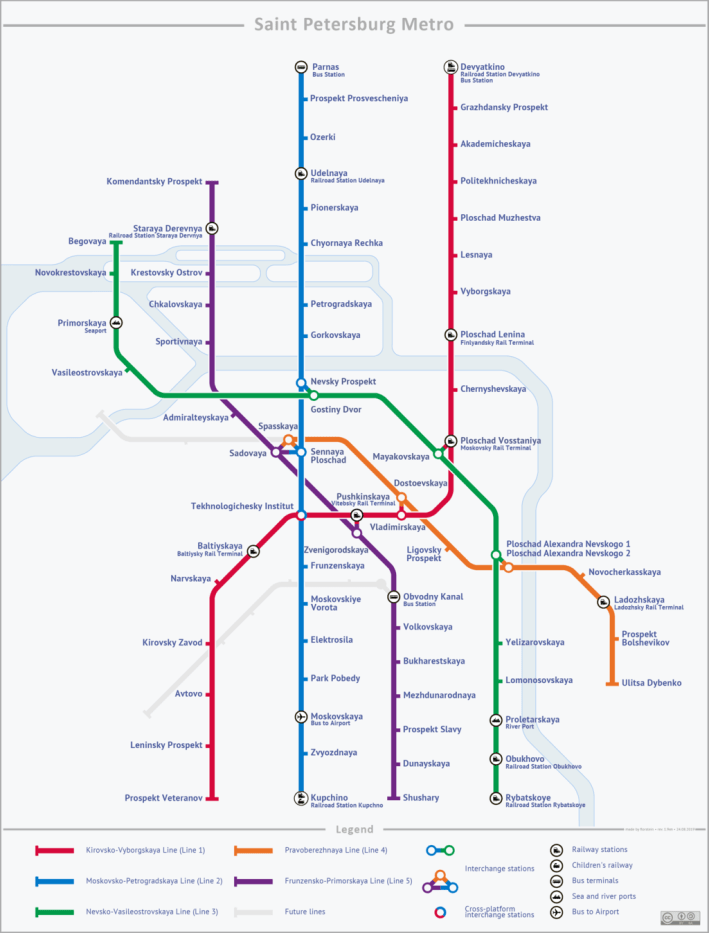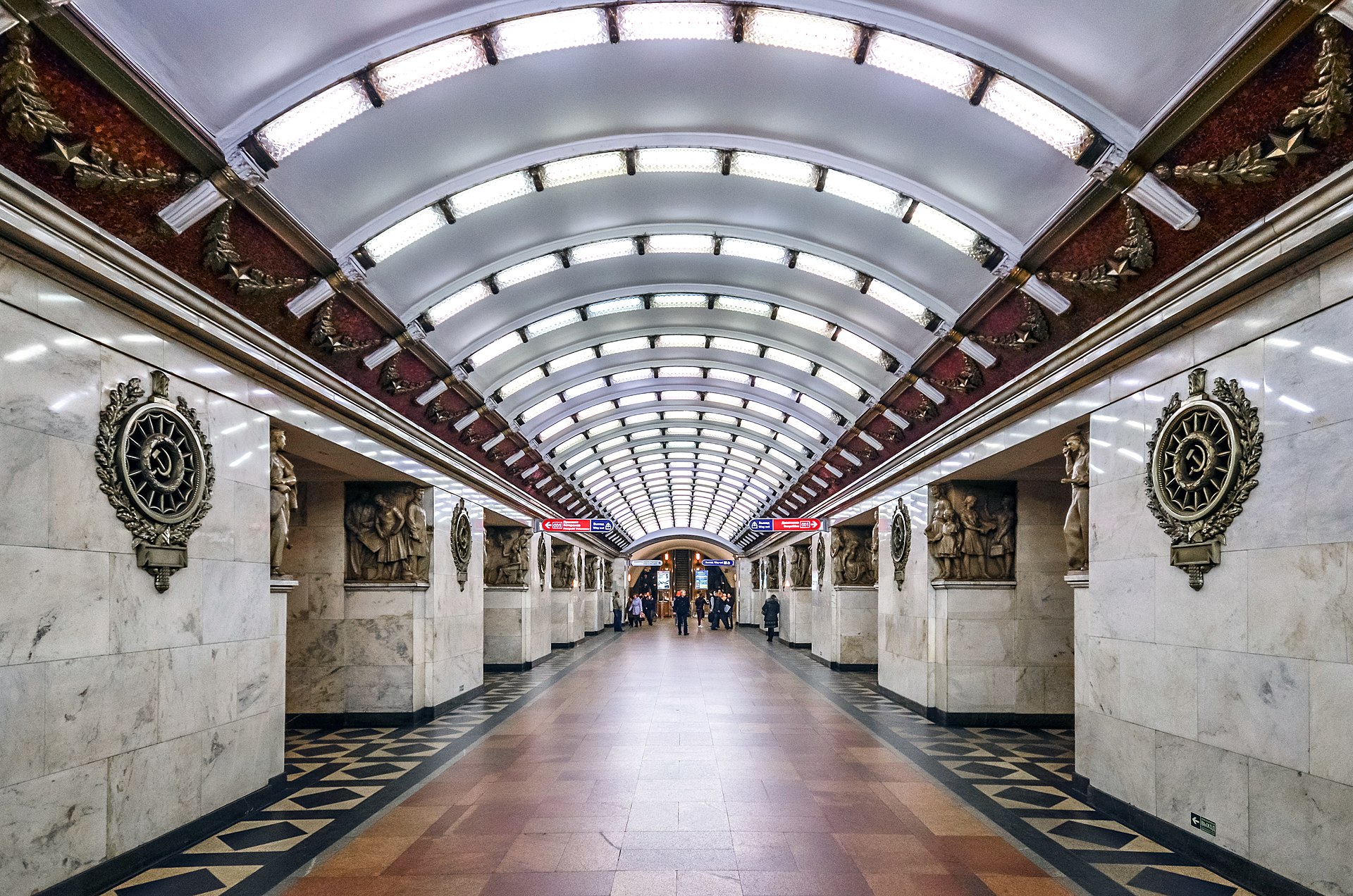I grew up in St. Petersburg, the one-time capital and now second-largest city in Russia. Even after almost 23 years of living in the Chicago area, part of me still misses the grand architecture, the sun not setting until late into the night during the summer, and the St. Petersburg Subway, which, ignited my love for public transit. I still have some relatives back there, including three of my grandparents, my dad, one of my brothers, and a few more distant relatives.
I Skype with Grandpa Gena pretty regularly, and, obviously, we’ve been talking about the coronavirus. The Russian ministry of health reports that, as of Thursday afternoon, Moscow Time, there had been 147 confirmed cases in all of the Russian Federation, which is a dramatic increase compared to 93 reported the day before. RIA Novosti, a state-owned media agency, reported seven confirmed cases in St. Petersburg and one in the wider Lenigradskiy region – though the number doesn’t include two patients that have recovered. And, as in Illinois and much of the United States in general, testing has been lagging. In St. Petersburg’s case, multiple local and national media outlets reported that, even though the city government announced several sites where people could get tested for free, most of the sites didn’t actually have the capacity to do it.
But that isn’t to say city and regional governments haven’t been doing anything. Even last week, companies were encouraged to let their employees work from home, large gatherings have been banned, many events have been either cancelled or postponed, and the schools were required to provide remote learning options for families that choose not to send their kids to class. As of yesterday, the Russian Ministry of Culture and the St. Petersburg government imposed further restrictions, effectively closing down most museums and major theaters. The event sizes have been limited to 50 people.
But, through it all, the St. Petersburg Subway and other forms of transportation are still running, just like they have been in Chicago. (No one should be taking non-essential transit trips during the pandemic, in order to minimize viral exposure and keep buses and trains less crowded, and therefore safer, for those who must ride and operate them.) I thought it might be interesting to look at what the two cities' transit systems are are doing to address the health risks. What I found is that St. Petersburg is doing a little more, most notably, testing drivers and engineers for symptoms. Chicago area transit agencies have done better job communicating safety information to the public. The fact that St. Petersburg public transit is split between far more transit providers, many of which are privately run, doesn’t help matters.

The scale
First of all, St. Petersburg is simply larger than the city of Chicago, both in terms of geographic area and population (5.35 million people compared to Chicago’s 2.7 million). And, while I can go on a long rant about how Russia in general and St. Petersburg in particular failed to learn any lessons from American suburbanization, and they promote driving while downgrading transit, public transportation still plays an important role. The St. Petersburg Subway is the lifeblood of the city, with five lines carrying 743 million passengers a year.
The city also has a diminished, but still extensive above-ground transit network that includes 42 tramway (what Americans would call streetcars or trolleys) routes, 46 trolleybus (trackless trolley) routes, 280 city-operated bus routes (some of which extend into the suburbs) and almost twice as many privately operated routes. The region also has an extensive network of the (mostly electrically powered) suburban commuter train lines and longer-distance passenger trains (as in the rest of Europe, train travel accounts for the larger share of inter-city passenger travel than it does in United States.) There several commuter lines that have stops within the city, but there is no equivalent of Metra Electric’s South Chicago and Blue Island branches, or Rock Island District’s suburban/Beverly branch, which primarily serve Chicago.
In the Chicago area, public transit is managed by four agencies. CTA runs the ‘L’ lines and the city buses, while Metra runs the commuter trains, Pace runs the suburban buses and paratransit services throughout the city and the suburbs, and the Regional Transportation Authority oversees them all. In St. Petersburg, each form of transit is operated by a different city-owned company and, as I mentioned before, there are multiple private route operators. That made getting some of the information for this article challenging.

Coping With the Coronavirus
At the moment, none of the systems in either city are changing schedules – although though Metra is considering reducing its weekday schedule and Pace is encouraging paratransit riders to postpone “non-essential travel.” (Amtrak has already Chicago cut service due to low ridership.)
The CTA hasn't made any major changes to its cleaning protocols for vehicles and stations, including Ventra ticket machines and elevator panels, which it says were already following "industry best practices... [Health officials] advise CTA that no operational changes or revised protocols are necessary at this time."
However, Metra has stepped up cleaning, recently bringing in extra crews to help clean trains and downtown terminals, while cleaning further-flung stations “multiple times a week.” Pace has taken the most drastic measures, suspending hiring, closing waiting rooms in major transit hubs, and stepping up disinfection as part of the regular routine.
Chicago transit agencies have been pretty upfront about their efforts to address the coronavirus, putting links to the informational pages on the home pages of their websites. But with St. Petersburg public transit, finding pandemic information has been harder.
The St. Petersburg Subway website didn’t have anything on it about the coronavirus until March 18. The site for tramways and trolleybuses still doesn’t have anything as of this writing. The site for the city-run bus routes did post a notice on March 17 that all of the international bus routes, which pick up and drop off passengers at a city-run terminal, were cancelled, and it did put up a short statement about bus cleaning on March 18. As for the private providers, while the city maintains a portal showing exactly who they are and what routes they use, I haven’t been able to find their individual websites, let alone what they’re doing.
I was able to find a pretty comprehensive press release on the site for St. Petersburg’s Committee on Transit. It mentions that all drivers and engineers get checked for coronavirus symptoms when they show up for work. If they have high temperature, sneezing and/or coughing, they are not allowed to drive. (The press release makes no mention of any medical care or quarantine). It mentions that, as of yesterday, 1,913 city-operated buses and 1,426 tramways, trolleybuses and electric buses went though “deep disinfection” process. "The interiors of the operational equipment are regularly aired out, go through wet cleaning and preventative disinfection: All of the door handles, railings, seat armrests and backs, etc, are wiped down." The aforementioned bus operator press release adds that the buses get cleaned after returning to the garage and at terminals between trips.
The Committee on Transportation press release mentions that the stations, including the escalators, get cleaned and disinfected “four times a day,” while handrails and seats inside subway cars get cleaned twice a day. Turnstiles, station doors and ticket counters get cleaned once every 30 minutes. The press release on the St. Petersburg subway website mentions that that the disinfecting fluids used on train cars are “30 percent more concentrated” than usual. And the transit provider put up a video showing what that looks like.
The St. Petersburg Subway also put up a press release showing Alexander Beglov, the city governor (an equivalent of a mayor) and subway system head Vladimir Garyukin visiting the Prospekt Slavy station, one of the city’s newest stations, to see the clean-up.
“The subway is one of the places of mass concentration of people,” Beglov was quoted as saying. “We are doing everything we can to ensure the passengers’ safety.” That underscores how important the subway is in St. Petersburg.
The English-language version of the St. Petersburg Subway website doesn’t mention a thing about the coronavirus. However, the news section hasn’t been updated since Dec. 25, 2019. The other two websites don’t have an English version.
As for the private providers, the Committee on Transportation press release mentions that “work is currently being done to ensure that non-state-run carriers” follow the recommendations. Which, to this former St. Petersburg resident, isn’t really encouraging.
I suppose both Chicago and St. Petersburg are trying to do the best they can to keep their public transit working. Even with both cities slowing down as more people shelter in their homes, transit still provides an essential service for residents. And both cities will, hopefully, get more test kits, so that we can truly understand exactly how widespread this pandemic is.
Here are some tips on preventing the spread of coronavirus, and advice for Chicagoans on what to do if you think you may have been exposed to the virus.





